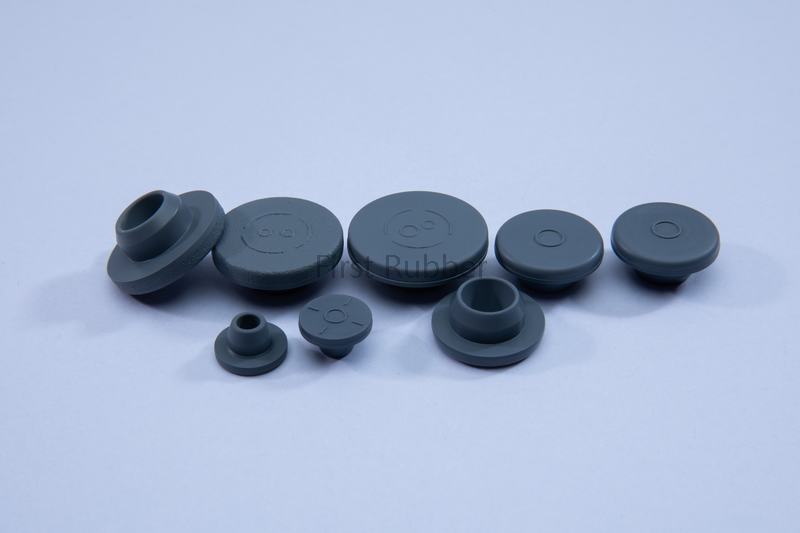The Crucial Role of 20mm Rubber Stoppers in Ensuring Drug Safety
Published:
May 24,2025
Classification:

The Crucial Role of 20mm Rubber Stoppers in Ensuring Drug Safety
Table of Contents
1. Introduction to 20mm Rubber Stoppers
2. Importance of Drug Safety in the Pharmaceutical Sector
3. What Are 20mm Rubber Stoppers?
4. Material Properties of 20mm Rubber Stoppers
5. Manufacturing Standards and Quality Control
6. Regulatory Compliance for Medical Packaging
7. Impact of Rubber Stoppers on Drug Stability and Safety
8. Future Trends in Rubber Stopper Manufacturing
9. Frequently Asked Questions
10. Conclusion
1. Introduction to 20mm Rubber Stoppers
The pharmaceutical industry is governed by stringent standards to ensure the safety and efficacy of medications. Among these standards lies the seemingly simple yet crucial component: the 20mm rubber stopper. These stoppers play a vital role in the packaging of medications, particularly in vials and syringes, where they act as a barrier between the drug and the external environment. This article aims to explore the essential function of 20mm rubber stoppers in ensuring drug safety, examining their material properties and manufacturing processes, as well as their compliance with regulatory standards.
2. Importance of Drug Safety in the Pharmaceutical Sector
Drug safety encompasses the measures taken to ensure that medications are free from contamination and maintain their intended efficacy throughout their shelf life. Any breach in drug safety can result in severe consequences, including compromised patient health, costly recalls, and legal ramifications for manufacturers. The role of packaging, specifically the stoppers used in drug containers, cannot be overstated. **20mm rubber stoppers** are designed to provide an effective seal, preventing contamination while maintaining the integrity of the drug formulation.
3. What Are 20mm Rubber Stoppers?
20mm rubber stoppers are cylindrical closures that fit into the necks of vials and bottles, typically made from elastomeric materials such as natural rubber, synthetic rubber, or thermoplastic elastomers. Their primary function is to seal the opening of the container while allowing for puncturing by needles or other devices when dosage is required. The design of these stoppers ensures that they can withstand multiple punctures without compromising the seal integrity, which is essential for maintaining drug safety.
4. Material Properties of 20mm Rubber Stoppers
The effectiveness of 20mm rubber stoppers in ensuring drug safety is largely dependent on their material properties. These properties include:
4.1 Elasticity
The elasticity of rubber stoppers allows them to conform tightly to the neck of the vial, creating an airtight seal. This property ensures that no external contaminants can enter the drug container.
4.2 Chemical Resistance
Different medications may interact with various materials; therefore, the chemical resistance of rubber stoppers is critical. High-quality 20mm rubber stoppers are designed to resist degradation from solvents, oils, and other chemicals found in pharmaceuticals.
4.3 Thermal Stability
With the potential for temperature fluctuations during storage and transportation, thermal stability is vital. Rubber stoppers must maintain their properties without warping or losing flexibility in varying temperatures.
4.4 Sterilization Compatibility
For many pharmaceutical applications, sterility is non-negotiable. The chosen materials for 20mm rubber stoppers should withstand sterilization processes, such as steam or ethylene oxide, without losing their effectiveness.
5. Manufacturing Standards and Quality Control
To ensure that 20mm rubber stoppers meet the necessary safety and performance standards, manufacturers follow strict guidelines throughout the production process. These include:
5.1 Good Manufacturing Practices (GMP)
GMP is a system that ensures products are consistently produced and controlled according to quality standards. This includes everything from the selection of raw materials to the final inspection of finished products.
5.2 Quality Assurance Testing
Before they reach the market, rubber stoppers undergo rigorous testing for various performance metrics, including tensile strength, elasticity, and the ability to maintain a seal under pressure.
5.3 Batch Testing
Batch testing is crucial for identifying any anomalies during production. Manufacturers will randomly select samples from each batch of stoppers to ensure they meet regulatory standards and perform as intended.
6. Regulatory Compliance for Medical Packaging
The production and use of 20mm rubber stoppers are subject to various regulations set forth by health authorities around the world. Compliance ensures that stoppers are safe for use and effective in maintaining drug quality.
6.1 FDA Regulations
In the United States, the Food and Drug Administration (FDA) oversees the safety of medical products, including packaging. Manufacturers must submit detailed documentation proving that their rubber stoppers fulfill the required safety and efficacy standards.
6.2 ISO Standards
International Organization for Standardization (ISO) standards, such as ISO 15378. outline the requirements for quality management systems in the production of primary packaging for medicinal products. Compliance with these standards is crucial for global market access.
6.3 European Pharmacopeia Compliance
For companies operating in Europe, compliance with the European Pharmacopeia is mandatory. This regulatory framework defines the quality standards for medicinal products and packaging, ensuring safety and efficacy.
7. Impact of Rubber Stoppers on Drug Stability and Safety
The interaction between rubber stoppers and drug formulations is a complex relationship that significantly impacts drug stability and safety.
7.1 Prevention of Contamination
The primary role of 20mm rubber stoppers is to serve as a barrier against environmental contaminants. This includes microorganisms, dust, and other particulates that could potentially compromise drug integrity.
7.2 Maintenance of Chemical Stability
Certain drugs are sensitive to light and oxygen. Rubber stoppers must not only provide a physical seal but also prevent the ingress of light and moisture, which could lead to the degradation of the active pharmaceutical ingredients (APIs).
7.3 Facilitating Safe Administration
Properly designed rubber stoppers allow for safe and efficient administration of medications. They can withstand repeated puncturing and maintain their integrity, ensuring that patients receive the correct dosage without contamination.
8. Future Trends in Rubber Stopper Manufacturing
As the pharmaceutical industry continues to innovate, the manufacturing of 20mm rubber stoppers is also evolving.
8.1 Sustainable Materials
With growing concerns about environmental impact, manufacturers are exploring biodegradable and sustainable materials for rubber stoppers. This shift could redefine packaging standards in the industry.
8.2 Smart Packaging Solutions
The integration of technology into packaging is on the rise. Future rubber stoppers may feature smart technology that monitors drug conditions, providing real-time data to ensure safety and efficacy.
8.3 Enhanced Customization
As personalized medicine becomes more common, the need for customized packaging solutions, including tailored rubber stoppers, will grow. Manufacturers will need to adapt to varied drug formulations and delivery methods.
9. Frequently Asked Questions
Q1: What are the main materials used in 20mm rubber stoppers?
A1: The primary materials include natural rubber, synthetic rubber, and thermoplastic elastomers, chosen for their elasticity and chemical resistance.
Q2: How do rubber stoppers prevent contamination?
A2: Rubber stoppers form a tight seal that blocks external contaminants, including microorganisms and particulates, from entering the drug container.
Q3: Are there specific regulations for rubber stoppers used in pharmaceuticals?
A3: Yes, rubber stoppers must comply with various regulations, including FDA standards, ISO guidelines, and European Pharmacopeia requirements.
Q4: Can rubber stoppers affect the stability of the drugs they seal?
A4: Yes, the interaction between rubber stoppers and drug formulations can impact stability. High-quality stoppers are designed to minimize chemical interactions that could degrade active ingredients.
Q5: What future trends should we expect in rubber stopper manufacturing?
A5: Key trends include the use of sustainable materials, smart packaging solutions with integrated technology, and enhanced customization to meet the needs of personalized medicine.
10. Conclusion
In conclusion, **20mm rubber stoppers** play an essential role in ensuring drug safety within the pharmaceutical industry. Through their unique material properties, stringent manufacturing standards, and regulatory compliance, these stoppers provide a crucial barrier against contamination while maintaining the stability of drug formulations. As technology and industry practices continue to advance, the future of rubber stoppers promises to enhance the safety and efficacy of medications even further, ensuring that patients receive the highest quality care.





